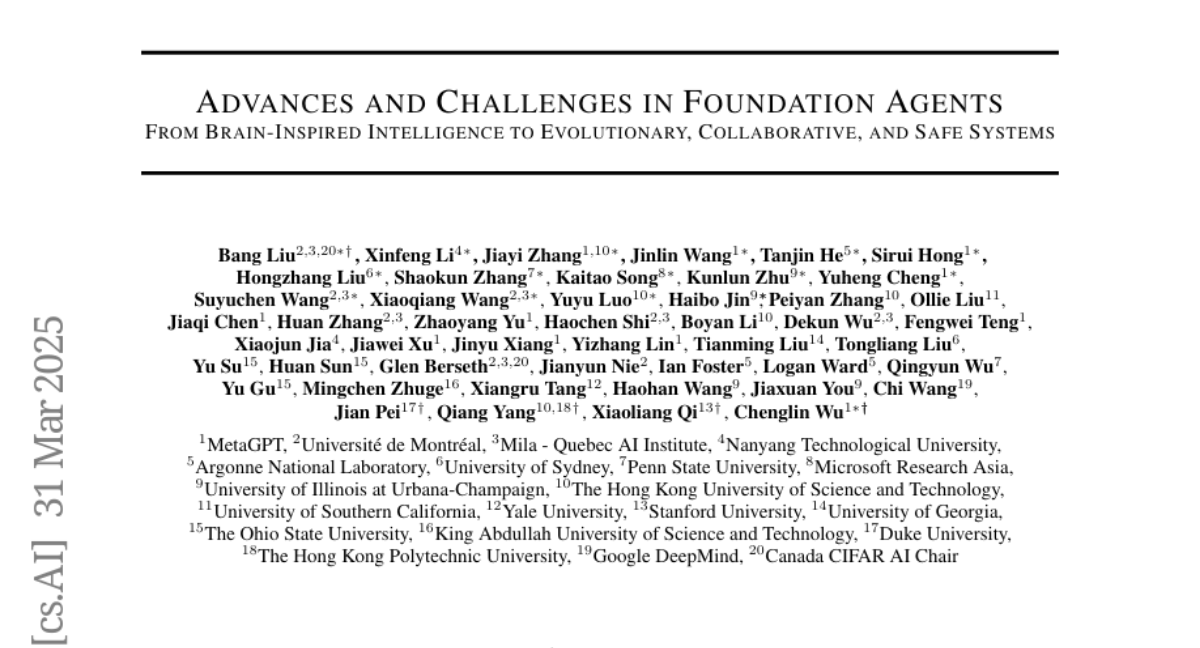Advances and Challenges in Foundation Agents: From Brain-Inspired Intelligence to Evolutionary, Collaborative, and Safe Systems
Bang Liu, Xinfeng Li, Jiayi Zhang, Jinlin Wang, Tanjin He, Sirui Hong, Hongzhang Liu, Shaokun Zhang, Kaitao Song, Kunlun Zhu, Yuheng Cheng, Suyuchen Wang, Xiaoqiang Wang, Yuyu Luo, Haibo Jin, Peiyan Zhang, Ollie Liu, Jiaqi Chen, Huan Zhang, Zhaoyang Yu, Haochen Shi, Boyan Li
2025-04-04

Summary
This paper discusses the progress and problems in creating smart AI agents that can reason, understand, and act in different situations, like humans.
What's the problem?
Designing, testing, and improving AI agents is difficult because they are complex and need to be safe and reliable.
What's the solution?
The paper suggests thinking about AI agents like a brain, with different parts working together. It also explores how agents can learn on their own, work together, and be made safe.
Why it matters?
This work matters because AI agents are becoming more common in our lives, and it's important to understand how to build them well so they can help us safely and effectively.
Abstract
The advent of large language models (LLMs) has catalyzed a transformative shift in artificial intelligence, paving the way for advanced intelligent agents capable of sophisticated reasoning, robust perception, and versatile action across diverse domains. As these agents increasingly drive AI research and practical applications, their design, evaluation, and continuous improvement present intricate, multifaceted challenges. This survey provides a comprehensive overview, framing intelligent agents within a modular, brain-inspired architecture that integrates principles from cognitive science, neuroscience, and computational research. We structure our exploration into four interconnected parts. First, we delve into the modular foundation of intelligent agents, systematically mapping their cognitive, perceptual, and operational modules onto analogous human brain functionalities, and elucidating core components such as memory, world modeling, reward processing, and emotion-like systems. Second, we discuss self-enhancement and adaptive evolution mechanisms, exploring how agents autonomously refine their capabilities, adapt to dynamic environments, and achieve continual learning through automated optimization paradigms, including emerging AutoML and LLM-driven optimization strategies. Third, we examine collaborative and evolutionary multi-agent systems, investigating the collective intelligence emerging from agent interactions, cooperation, and societal structures, highlighting parallels to human social dynamics. Finally, we address the critical imperative of building safe, secure, and beneficial AI systems, emphasizing intrinsic and extrinsic security threats, ethical alignment, robustness, and practical mitigation strategies necessary for trustworthy real-world deployment.